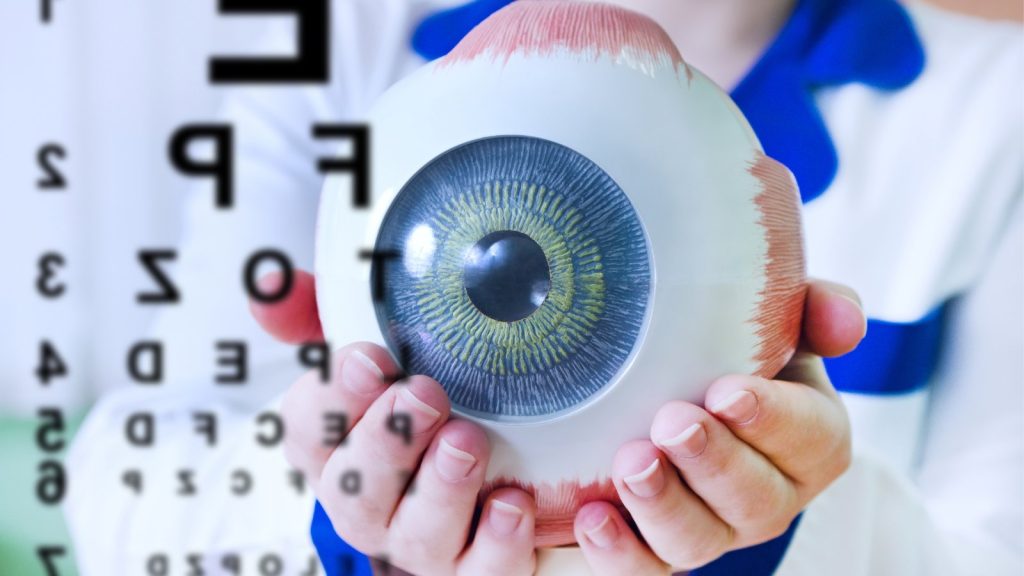Eyecare Near Me: Comprehensive and Reliable Vision Providers
Eyecare Near Me: Comprehensive and Reliable Vision Providers
Blog Article
The Duty of Advanced Diagnostic Tools in Identifying Eye Disorders
In the realm of ophthalmology, the use of innovative analysis devices has changed the early identification and management of different eye conditions. From detecting subtle changes in the optic nerve to keeping an eye on the development of retinal illness, these innovations play an essential role in enhancing the accuracy and efficiency of diagnosing ocular conditions. As the need for specific and prompt diagnoses continues to grow, the integration of advanced tools like optical coherence tomography and aesthetic area testing has come to be indispensable in the realm of eye treatment. The detailed interaction between technology and ophthalmic techniques not just clarifies elaborate pathologies yet likewise opens doors to customized therapy methods.
Relevance of Very Early Diagnosis
Very early diagnosis plays an essential role in the reliable management and therapy of eye disorders. Prompt identification of eye problems is essential as it permits for prompt treatment, potentially stopping further progression of the condition and reducing lasting problems. By detecting eye conditions at a beginning, doctor can supply appropriate treatment strategies customized to the specific condition, eventually leading to better results for people. Early diagnosis makes it possible for people to access required support services and resources quicker, enhancing their general high quality of life.
Innovation for Discovering Glaucoma
Innovative diagnostic technologies play a crucial duty in the early detection and surveillance of glaucoma, a leading cause of irreversible loss of sight worldwide. One such innovation is optical coherence tomography (OCT), which offers detailed cross-sectional photos of the retina, enabling the dimension of retinal nerve fiber layer density. This measurement is essential in analyzing damages triggered by glaucoma. One more innovative device is visual area testing, which maps the level of sensitivity of a client's aesthetic field, assisting to spot any type of areas of vision loss feature of glaucoma. Additionally, tonometry is made use of to measure intraocular stress, a significant risk variable for glaucoma. This test is vital as elevated intraocular pressure can cause optic nerve damages. Newer innovations like the usage visit this site of artificial intelligence algorithms in examining imaging information are revealing promising outcomes in the early detection of glaucoma. These sophisticated analysis devices click here for more make it possible for eye doctors to diagnose glaucoma in its early stages, enabling for prompt treatment and much better management of the illness to stop vision loss.
Duty of Optical Comprehensibility Tomography

OCT's capacity to evaluate retinal nerve fiber layer density permits for precise and objective measurements, aiding in the very early detection of glaucoma even before visual field problems end up being obvious. Generally, OCT plays a critical duty in boosting the analysis precision and administration of glaucoma, inevitably adding to far better results for people at risk of vision loss.
Enhancing Diagnosis With Visual Area Screening
An important part in thorough ocular analyses, aesthetic area testing plays a pivotal role in boosting the analysis process for different eye disorders. By evaluating the complete degree of a client's aesthetic area, this test provides critical details regarding the functional honesty of the entire visual pathway, from the retina to the aesthetic cortex.
Visual area screening is particularly important in the diagnosis and monitoring of conditions such as glaucoma, optic nerve problems, and different neurological diseases that can impact vision. Through measurable measurements of outer and central vision, medical professionals can find subtle adjustments that may show the presence or development of these disorders, also prior to noticeable signs and symptoms occur.
Furthermore, visual area testing enables for the monitoring of treatment efficiency, helping eye doctors customize restorative treatments to specific people. eyecare near me. By tracking modifications in visual field performance in time, doctor can make informed decisions concerning adjusting medicines, advising surgical interventions, or carrying out various Visit Website other appropriate steps to protect or boost a patient's visual feature
Managing Macular Degeneration

Final Thought
In verdict, advanced analysis devices play an essential function in determining eye conditions early on. Technologies such as Optical Comprehensibility Tomography and aesthetic field testing have considerably boosted the precision and performance of detecting conditions like glaucoma and macular degeneration.
Report this page